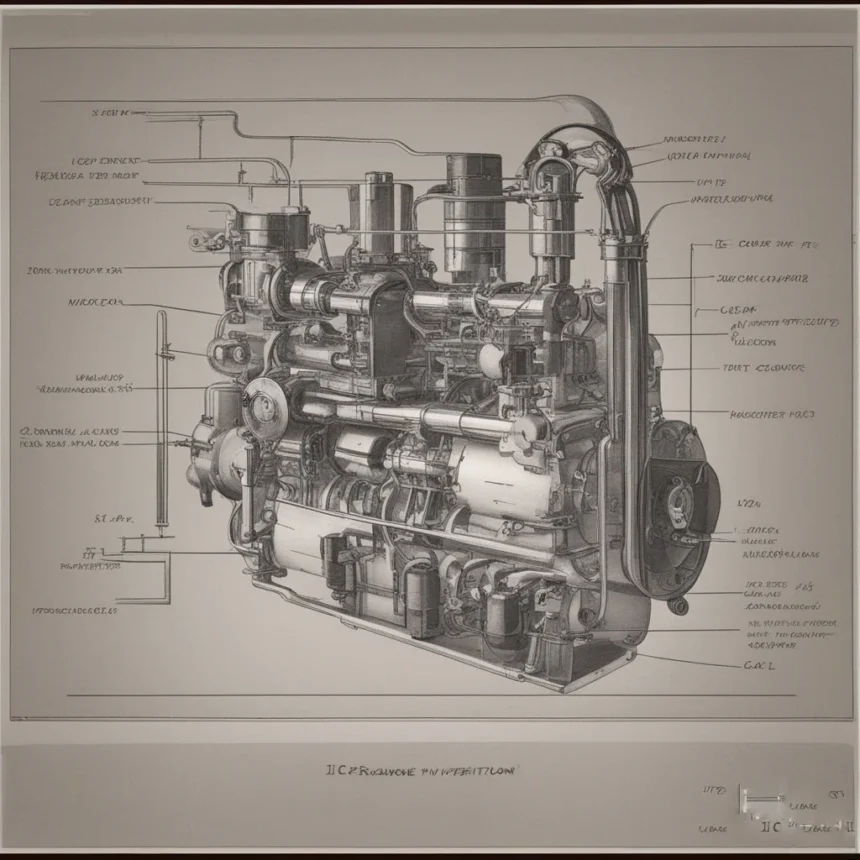The internal combustion engine has played a crucial role in shaping modern transportation, industry, and technology. This engine type has revolutionized mobility and powered everything from automobiles to aircraft. Understanding the history of the internal combustion engine allows us to appreciate its impact on society and the advancements that have led to its current efficiency and performance.
The Early Concepts of Combustion Power
Before the internal combustion engine became a practical power source, early scientists and inventors explored the idea of using controlled explosions to generate mechanical energy. In the 17th and 18th centuries, inventors such as Christopher Huygens and Denis Papin experimented with gunpowder-based engines, though these designs were largely impractical.
The first successful step toward modern combustion engines came in the early 19th century. In 1807, Swiss engineer François Isaac de Rivaz developed an engine powered by a hydrogen-oxygen mixture. Though not commercially viable, this invention laid the groundwork for future advancements.
The Rise of the Internal Combustion Engine
The 19th century saw significant progress in the development of the internal combustion engine. In 1860, Belgian engineer Étienne Lenoir created a gas-powered engine that could run continuously. Although inefficient, this innovation marked a pivotal moment in engine design.
The breakthrough came in 1876 when German engineer Nikolaus Otto developed the first practical four-stroke engine, known as the Otto cycle engine. This design improved efficiency and set the foundation for modern gasoline-powered engines. Around the same time, Rudolf Diesel invented the compression-ignition diesel engine, which became widely used in heavy-duty applications.
The Automobile Revolution and Mass Production
With the advancement of the internal combustion engine, automobiles became a viable mode of transportation. Karl Benz patented the first practical gasoline-powered car in 1886, marking the beginning of the automotive industry.
By the early 20th century, Henry Ford’s introduction of assembly-line manufacturing made automobiles affordable and accessible to the masses. The internal combustion engine quickly became the dominant force behind personal and commercial transportation, replacing steam engines and horse-drawn carriages.
Technological Innovations in Internal Combustion Engines

Throughout the 20th and 21st centuries, continuous advancements have improved the internal combustion engine’s efficiency, reliability, and environmental impact. Innovations such as fuel injection systems, turbocharging, and hybrid powertrains have enhanced performance while reducing emissions.
With increasing concerns about climate change and fossil fuel dependency, researchers have developed cleaner-burning fuels, direct-injection systems, and variable valve timing technologies. These improvements ensure that internal combustion engines remain relevant even as electric and alternative energy vehicles gain popularity.
The Future of Internal Combustion Engines
While electric vehicles are on the rise, the internal combustion engine remains a vital technology. Engineers continue to refine designs, incorporating hybrid-electric systems and synthetic fuels to enhance sustainability. Emerging technologies like hydrogen combustion engines and biofuels offer promising alternatives for reducing carbon footprints.
Despite growing competition from electric vehicles, internal combustion engines will likely remain in use for decades. Their efficiency, cost-effectiveness, and adaptability to various fuel sources ensure they will continue playing a significant role in transportation and industry.
Conclusion
The internal combustion engine has come a long way since its early conceptual stages. From experimental designs to mass production and technological advancements, it has shaped the world in countless ways. As engineers continue to innovate, the internal combustion engine will evolve to meet modern environmental and efficiency standards, securing its place in the future of transportation and industry.
